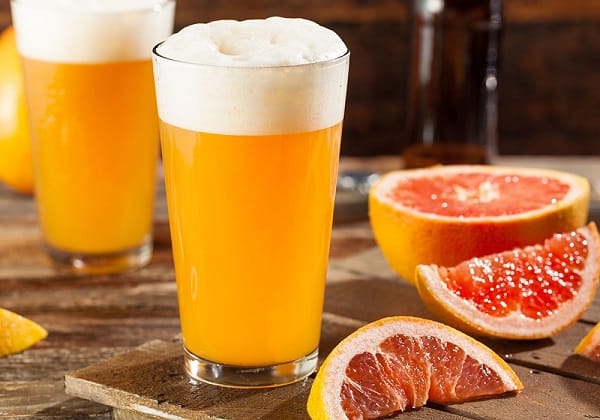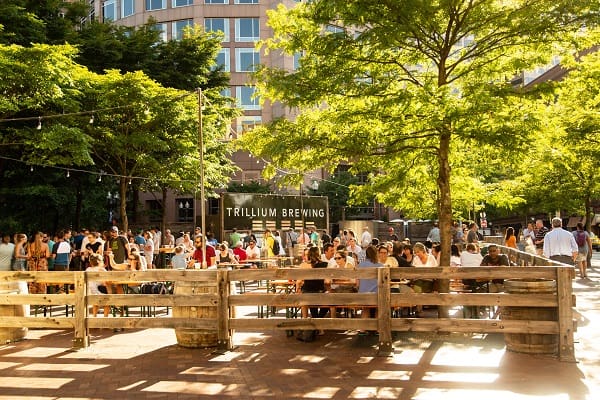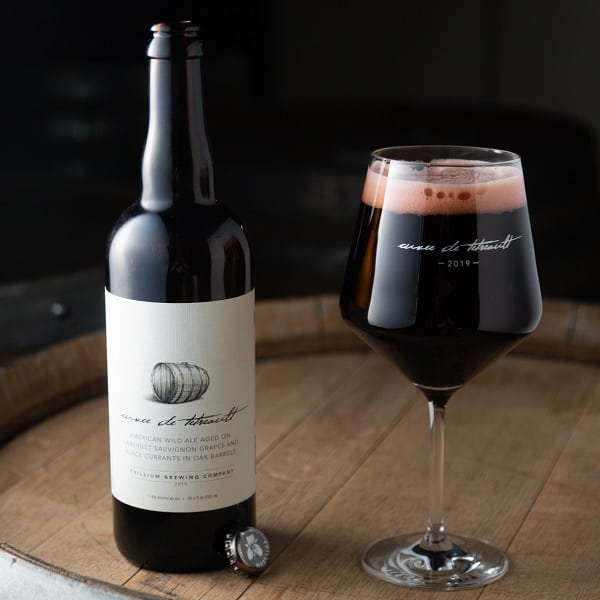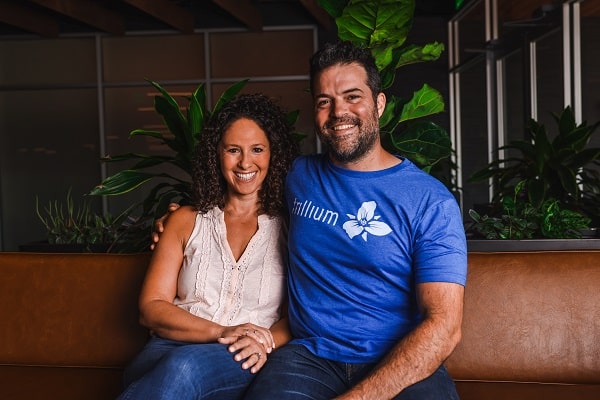The popularity of Sour Beers is consistent with a long history. Considered the “forefather of most modern beers”; all beers were sour. The natural bacteria in the early beers, dating back to 400 BC, produced a natural and tartness flavor. Refrigeration, in more modern times, basically eliminated sour beers (except for some European breweries) .

The initial modern day era of popularity for sour beers took place in the early 70’s. Belgian Lambics, and the style in which these are brewed are currently trending, while American wild beer, as it is commonly known by brewmasters and homebrewers, is creating a market.
While European sour beers were traditionally high in alcohol content, the newer versions, with its array of fruit, have a lesser ratio. Variations are also available to consumers. This increased interest has also led to sour beer cocktails. My personal favorite: blending a light alcohol and herbs with mashed fruit to enhance the flavor profiles of fruitier Lambics.
Lighter styles of sour ales include Gose and Berliner Weisse. These are most popular due to their refreshing tartness…from raspberry to guava, hibiscus and lime in the coconut. Sour beers can be as refreshing as a mojito in the summer heat!
On a recent trip to Colorado, we discovered Goed Zuur; a sour beer and cheese and cured meat restaurant in the Denver area. While not available for an interview, the pairings of cheeses and meats with a fine selection of sour beers and sour beer cocktails found our fancy. The complexity as they note ranges from sour ales to wild ales.
Just a few sources where to find Sour Ales:
- Sierra Nevada Wild Little Thing, Slightly Sour Ale Beer-available at some Targets
- New Belgium Mimosa Sour- instacart
- Prairie Sour Mix Pack – Instacart
- Functional Fruit Sour Beer Kit- Northern Brewer
- Victoria Beer; Sour Monkey-sour triple- Instacart
We spoke to two breweries about sour beers.
Trillium from the Boston area, perhaps one of the strongest breweries in the New England area
Big Top Brewery out of Sarasota Florida
We wanted to get a perspective on brewing styles.
Trillium
Q: It seems sour beer is really having a moment. How is the process different? What are your top sour beers, trending as we enter the fall season?
A: The world of sour beer is truly vast, ranging from the quicker-to-produce Kettle Sours to beers such as our American Wild Ales and Spontaneously Fermented Ales, which take many years to mature in oak casks before they are ready to be enjoyed. The processes used to produce these beers are just as varied. Beers like our Daily Serving series of heavily fruited, Berliner Weisse-inspired tart ales are soured relatively quickly during the brewing process, in the kettle, while a beer like Cuvèe de Tetreault, our anniversary American Wild Ale, utilizes a native New England mixed culture of yeast and various souring bacteria to slowly ferment the beer in oak barrels for a year or longer. In the latter case, the beer tells us when it’s ready!
I then queried Trillium Breweries for some true insight on modern day sour beers.

Q: How do you best pair food with sour beers?
A: Sour beer is a versatile tool for any table. The acidity helps to cut through rich, fatty foods, such as the Fried Chicken Sandwich on our Fort Point menu or any of the BBQ options in Canton. These beers also do really well alongside fresh seafood and cheese is a no-brainer for any beer style!
Q: How do you recommend tasting sour beers and what nuances is the consumer looking for?
A: The process for tasting sour beer is not unlike other styles. We taste with our eyes first, so it all starts with appearance. From there we dive into the aromatics of a given pour, which can tell us a lot. If there are vanilla or oak-driven notes, it tells us that the beer was likely conditioned on oak and we can expect a more complex drinking experience than the more straightforward, vibrant lemony acidity often found in kettle sours.
Q: Tell me three of your favorite sour beers and how has this trend affected your business.
A: While we’re widely known for our hop-forward offerings, we’ve been producing a wide range of sour and wild beers for years now and they make up a really solid portion of our production schedule. The following beers provide a great snapshot of the breadth that our sour program can display:


Co-Founder & Brewer: JC Tetreault / Head Brewer: Gavin McKenna
Esther & JC Tetreault

Trillium Brewing Company
- Trilium Canton: Restaurant, Taproom, and Beer Garden – 100 Royall Street, Canton, MA
- Trillium Fenway: Taproom – 401 Park Drive, Boston, MA
- Trillium Fort Point: Restaurant, Taproom, and Roof Terrace – 50 Thomson Place, Boston, MA
- Trillium Garden on The Greenway: Outdoor Beer Garden – High Street/Atlantic Ave, Boston, MA
(Might I suggest before or after a Red Sox game)
Jose, Head Brewer, Big Top Brewing Company – Sarasota, Florida
1. When did you first see the sour beer craze becoming so popular?
I started to see sour beers take hold while I was home brewing in San Diego, California in 2011.
The predominant style was Berliners at the time, however wild ales and mixed culture beers started to pop up on the radar shortly after I started brewing professionally in 2013.
2. How often do you brew sour beer and what are the most popular flavors
We typically brew a few sours a year. They are mainly fruited berliners, but we do a few goses and sour IPAs as well. Ring Master (a raspberry Berliner) is one of our most popular and a GABF silver medal winner. Mellon Way (a cantaloupe Berliner), and Sunshine Daydream (raspberry lemon Berliner with honey) are a few other fan favorites.
Honestly, the type of sours that we brew are fairly straight forward. We use a bacterial culture called Lactobacillus, which is the same bacteria that turns milk into yogurt. The biggest hurdle is maintaining temperature during the initial inoculation period, approximately 105-110 deg F, for 48 hours. Once the bacteria has had time to grow and produce lactic acid, the main component that makes these beers sour, the wort is then boiled and brewed just like any other beer.
3. Is it difficult to pair foods with the sour/tartness of sour beer?
I would say it’s fairly simple to pair food with sours. The tartness tends to clean the palate in between each bite, and I personally am a huge fan of sour beers paired with spicy foods, and seafood. But there are many foods that pair well with sour beers.
4. Is it more difficult brewing sour beers in a hotter climate and what is the demand?
The hotter climate doesn’t affect the sour beers we brew at all, and most breweries have tons of equipment with temperature controls. However, a hotter climate does create more of a demand to brew these tart and refreshing beers year round.
5. How did you learn to brew sour beer?
I learned how to brew sour beers at the first brewery I worked at. We were all fairly new to brewing these sours, so a lot of temperature adjustment and technique was tweaked over the course of multiple batches. A lot of independent study and research over the course of my brewing career has also helped in dialing these styles in
MY suggestion for appreciating sour beers is to look for flavor profiles you prefer. Taste and create your own cocktail using fresh muddled fruit and fresh herbs such as Rosemary sprigs over crushed ice.

